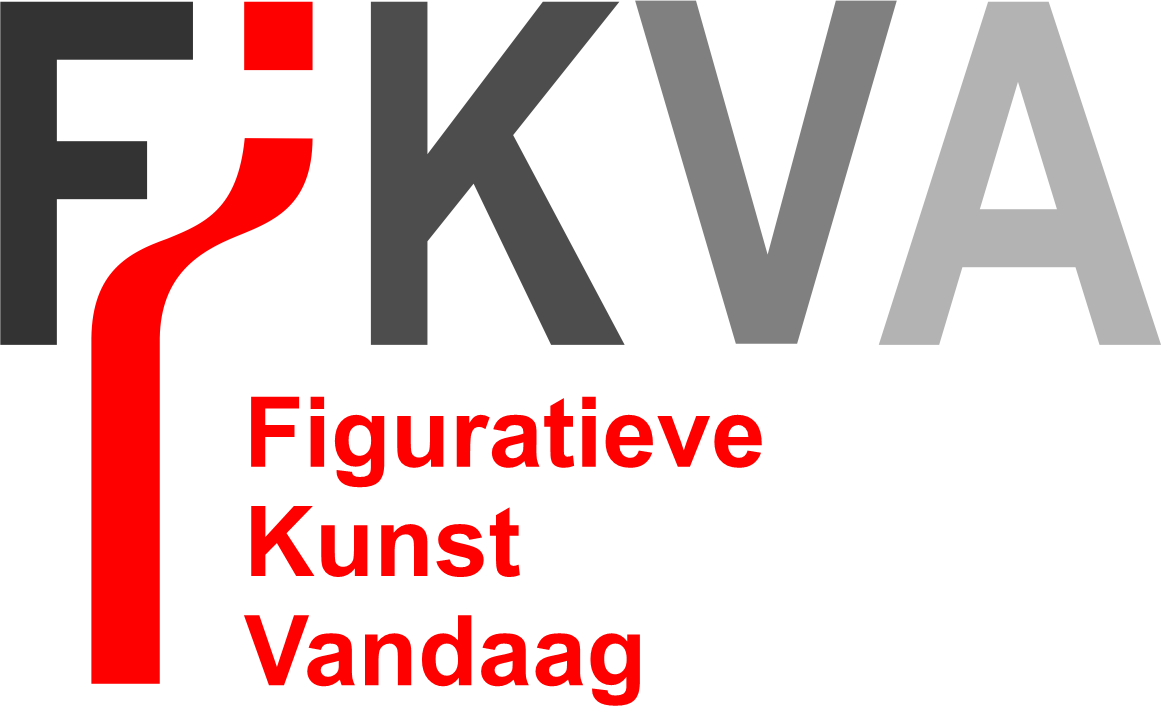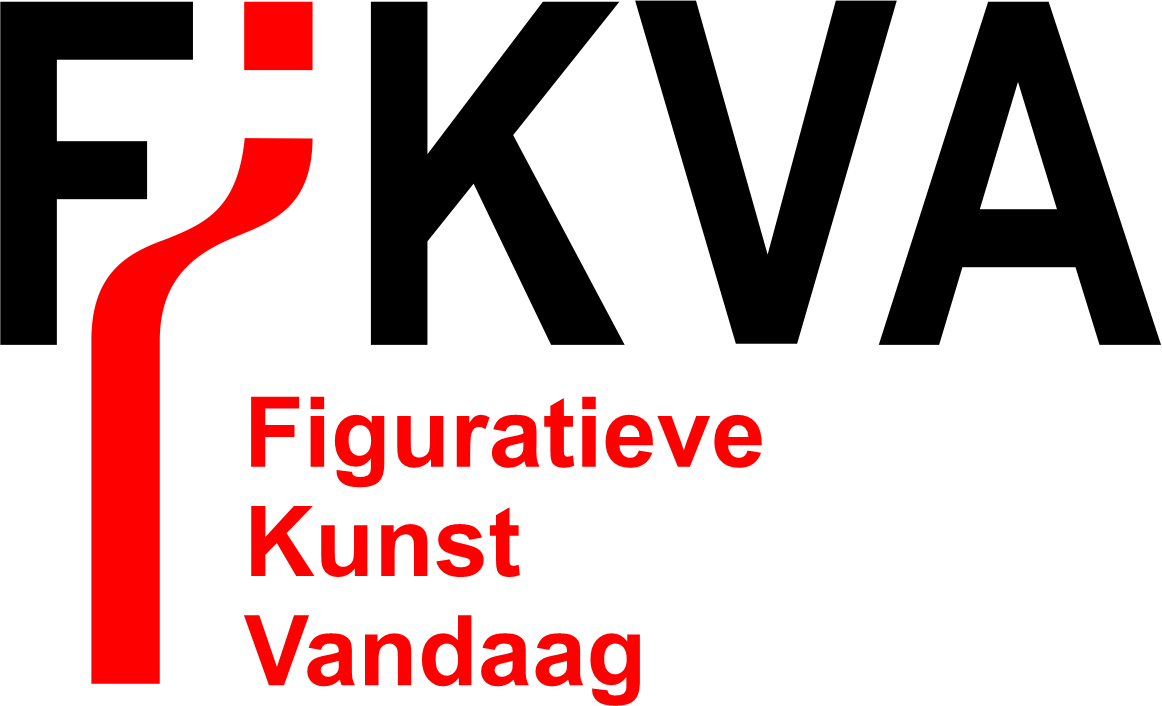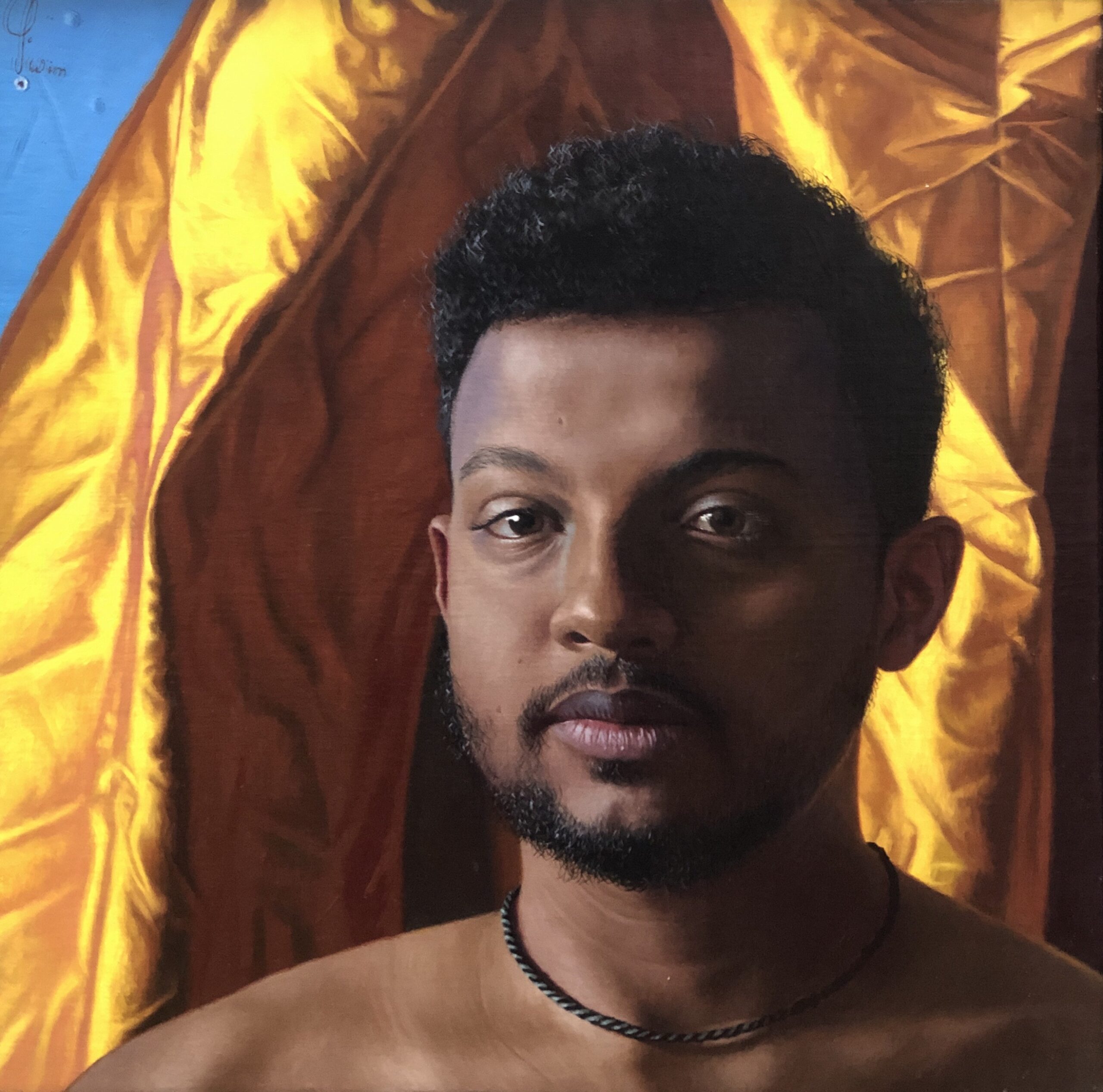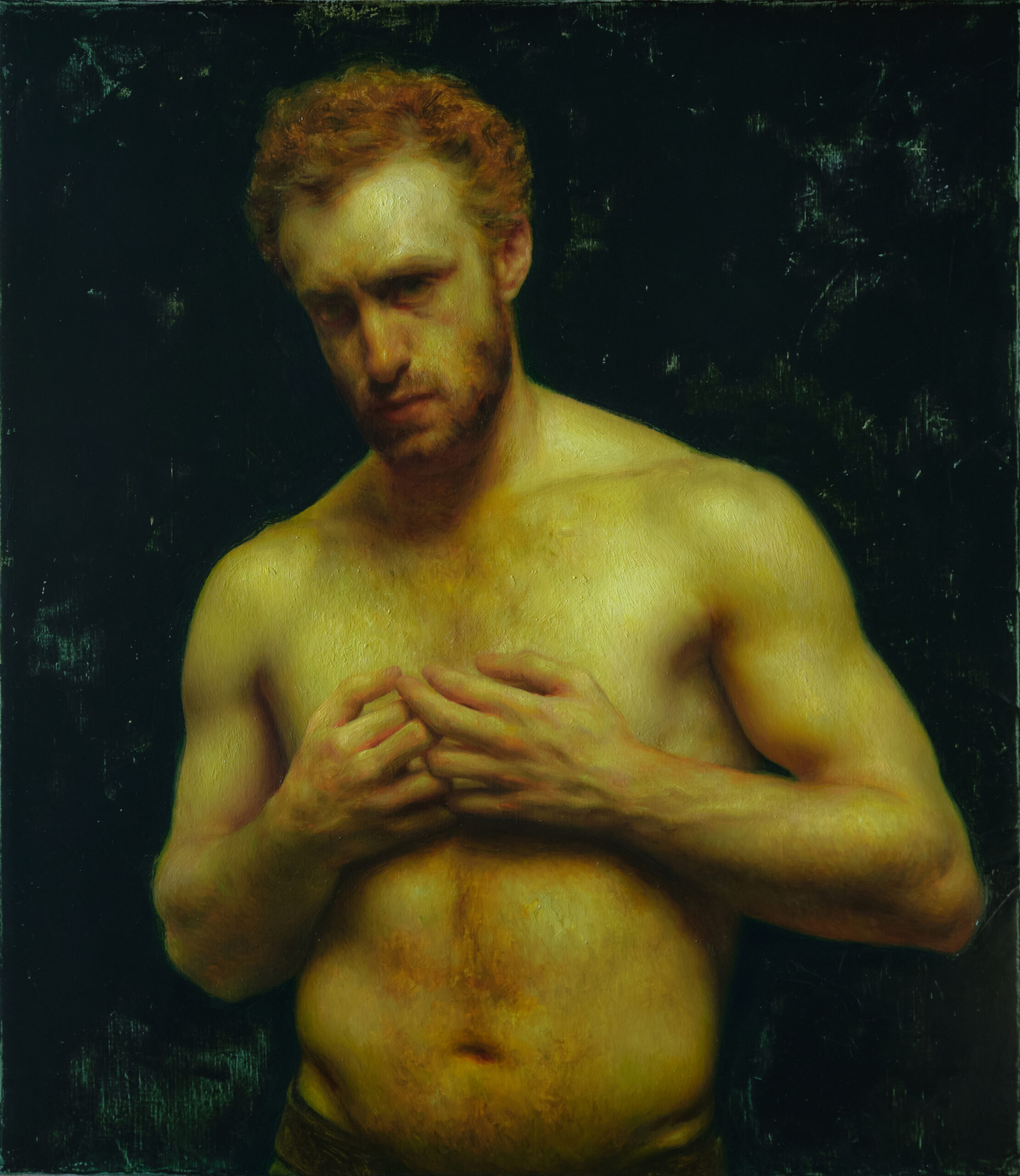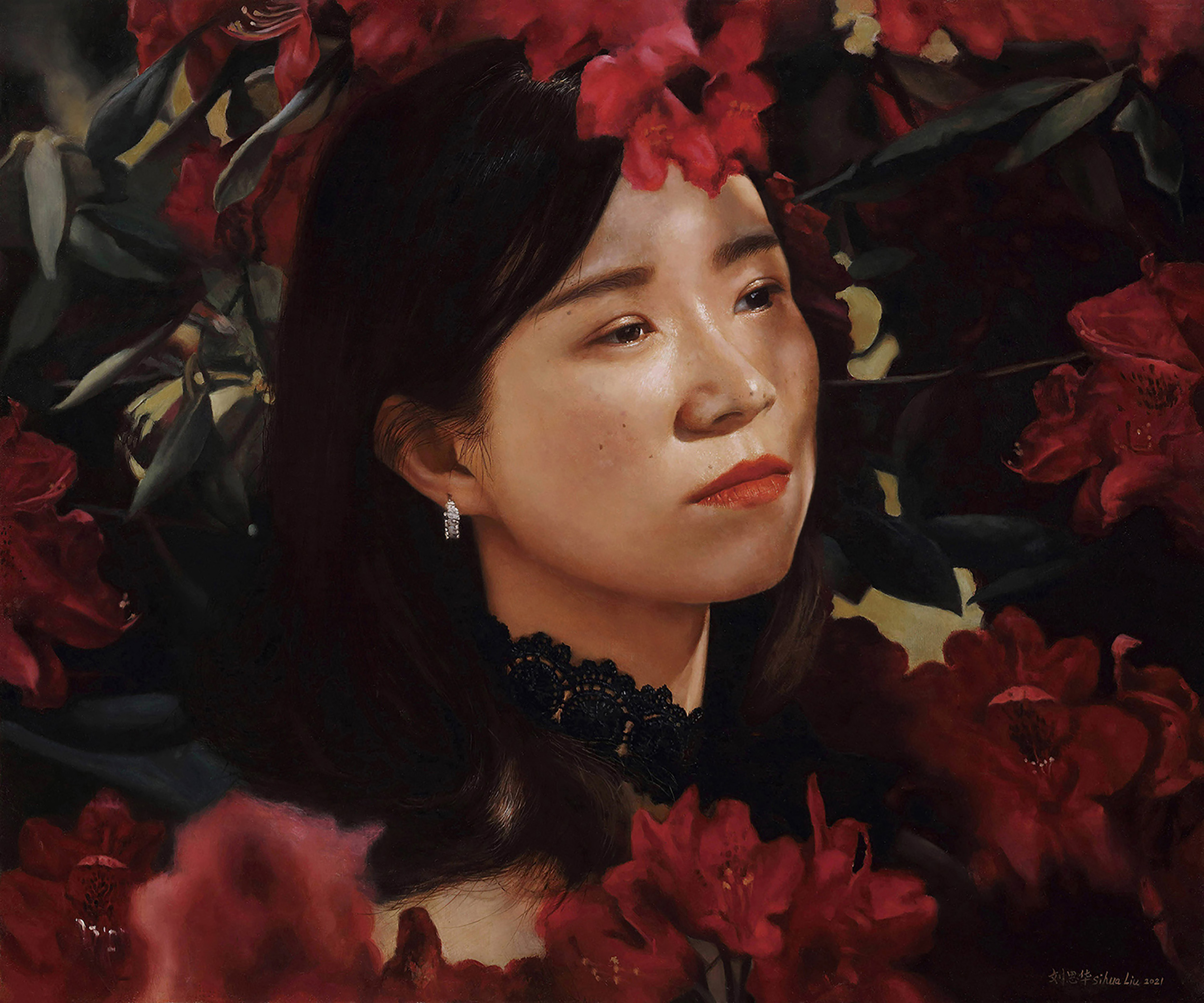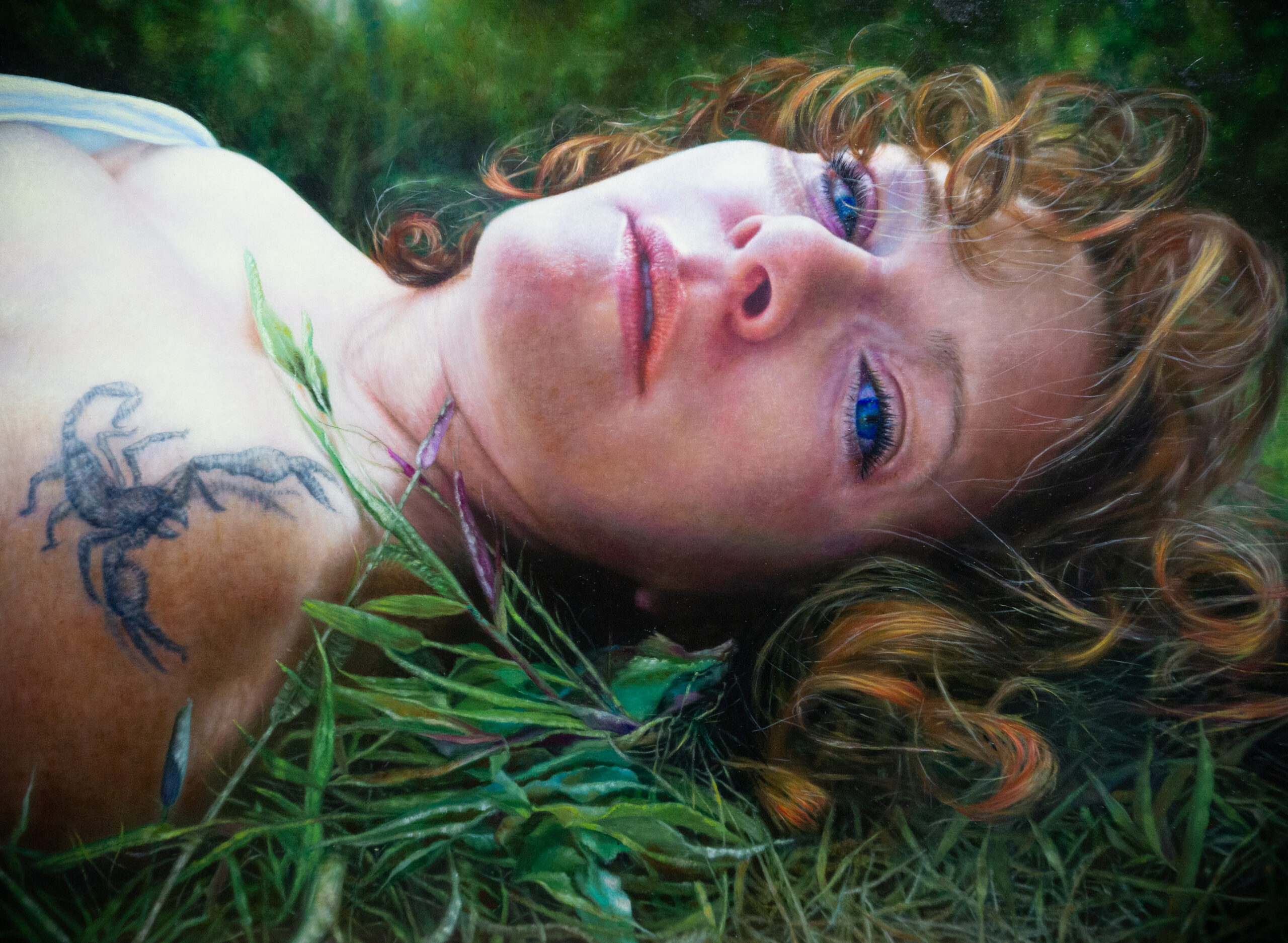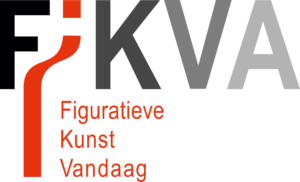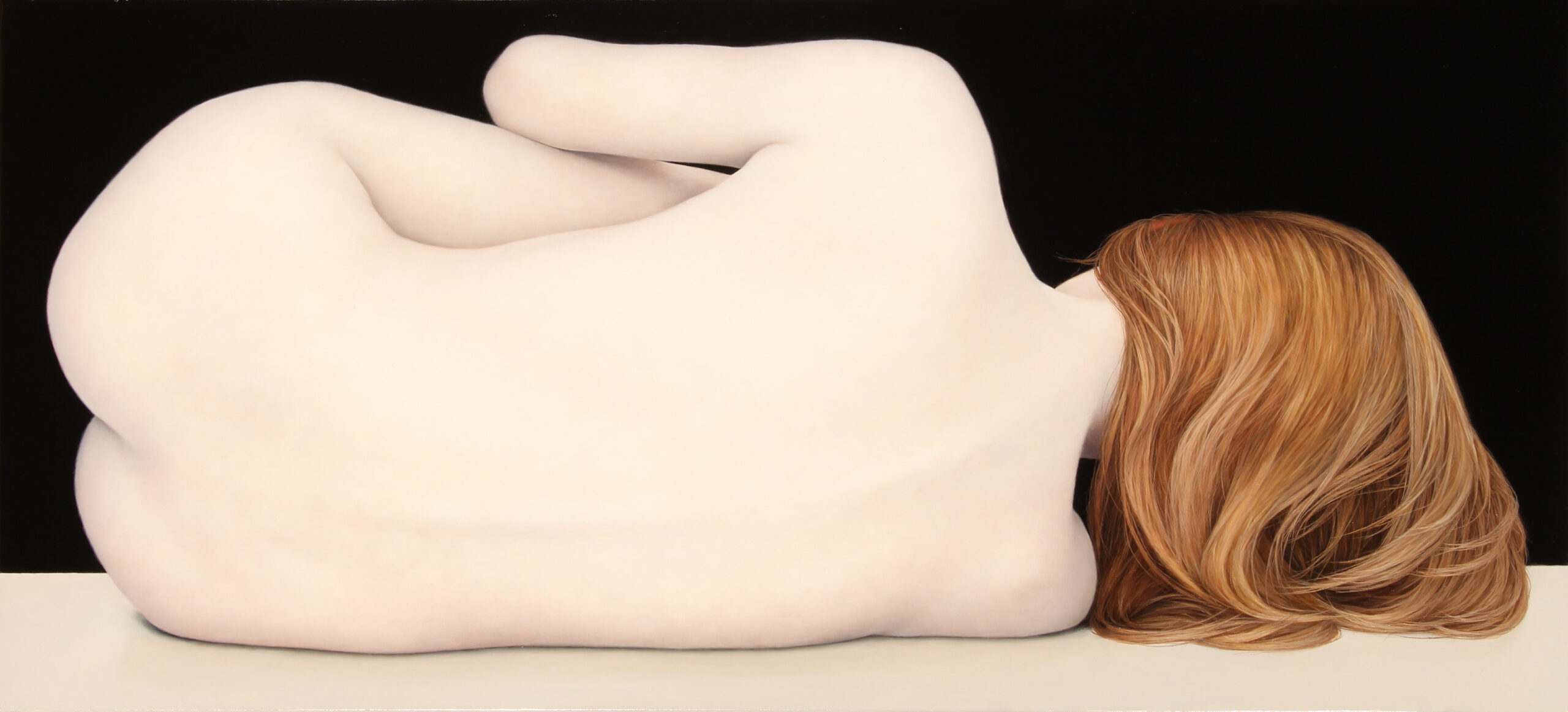
Meet artist Richard Harper
Galia Veleva: Interview with first place prize winner Richard Harper

Q: Please, tell us a bit about your past. When and where were you born? Where did you grow up? And where do you live now? What was your childhood like? What have you done for a living?…
I grew up in a beautiful town, Ontario, in Southern California. I moved to France in 1986 and lived in Paris for 8 years. Then because of lack of space for two artists to comfortably work in, my wife and I bought an old farm in a region of Normandy called le Perche.
I did my art studies at Los Angeles Art Center College of Design. I had intended to go into art direction but discovered quite quickly that I was not suited for that career. I was drawn toward drawing and painting and luckily this was pointed out to me by a professor in a commercial marker indication class.
For about 10 years after I finished college, I worked painting murals and trompe l’oeil until I realized that I had hardly done any painting for myself. This was brought to my attention one evening at dinner with a friend and client. I had spent most of the dinner whinging about this fact. She pointed out that I had been saying the same thing 10 years ago when we first met. I owe Marcia a lot for that kick in the butt. So, within a month of that evening, I made the decision to leave Laguna Beach where I was living at that time and move wherever I could that would allow me to afford to simply paint. Within a year from then I moved to France.
Q: If you could go back in time to what were the happiest times of your childhood, where would you go and why?
Highschool. I went to a beautiful high school built in the early 1900’s and the campus was gorgeous. I had my first art classes there.
Q: How did you become an artist? Tell us your short personal story.
I fell into studying art sort of by accident. I had been interested in drawing as a child but wound up unintentionally moved into a class in high school called Commercial art where I was introduced to painting. I was slowly drifting towards art and started college majoring in advertising art. That is where I started to discover traditional studio classes in drawing and painting. I was encouraged by one of my professors to apply to the Los Angeles Art Center College of Design. I was still thinking about going into advertising but because of the strength of my admission portfolio in drawing and painting I was directed to a major program in advertising illustration. The cursus focused on developing traditional art skills, so again I was taking studio classes, and had a one class a semester in art direction. It was then that I realized that I was not made for the advertising world. So, after two semesters I changed my major to graphic design. This didn’t fit well either. Luckily one of my classes was in marker indication, learning how to use felt markers to do story boards etc. I didn’t realize it right away, but I was not happy. There were no studio classes in this cursus. My professor for marker indication set up a model for the students to draw with markers. He then made the rounds to evaluate each student. When he got to me, he asked if I was in the painting department; I said no I was doing graphic design. I remember him saying, “oh no, you should be studying painting. If you follow your current line of studies, you will wind up unhappy for the rest of your life”. Because of my unhappiness his argument was very convincing. By the end of that semester, he worked with the director of the illustration department arranged me to change again. Because of my advanced work I was able to take painting and drawing classes again and only add an extra semester in order to get my degree.
I went to Europe 3 months after I graduated, and I traveled backpacking around the continent visiting all the great museums and seeing all the works I had only seen in reproductions. I knew for sure then that I wanted to be a painter.
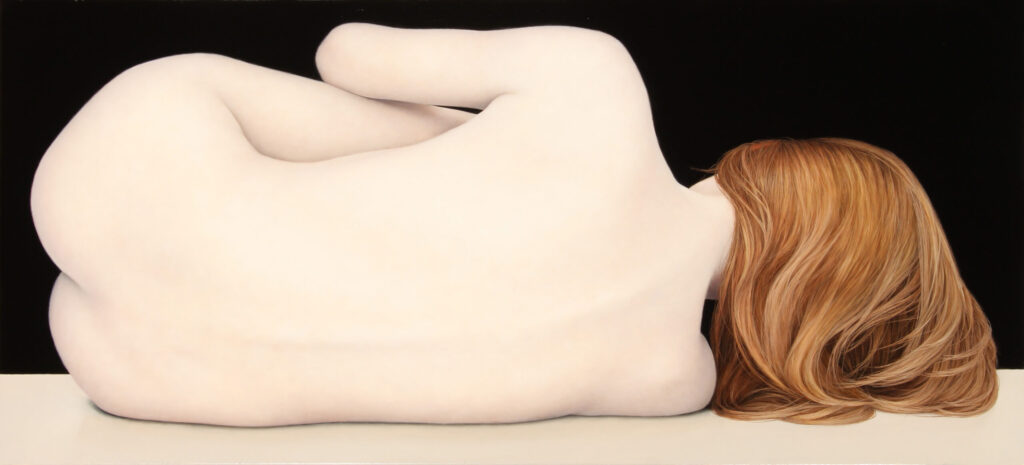
Q: What themes touch you the most? Do you have a favourite theme represented in your art? Or any future plans to work with a particular theme?
The human figure. It is the ultimate subject in art. How ever since I moved to the French countryside, I have been drawn to painting my beautiful surroundings. Normandy is one of the birthplaces of impressionism, so it sort of feels natural to want to depict my environment in paint. Especially the skies. They are immense and everchanging. So different to Southern California.
Q: If you could have 3 virtual imaginary friends (famous or not, still alive or lived in the past …) in your life who have inspired you, who would/might they be? And why?
Alfonse Bouguereau because I would want to see him work and pick his brain for his techniques.
Claude Monet because of his painting and I’m fascinated with his life and his evolution as an artist. His house is place of pilgrimage. Being only 2 hours away from my home I manage to visit almost every summer.

Something Elsewhere, Oil on Canvas ‐ 101 cm x 65 cm, 2022
Q: Do you have a muse? Please tell us your muse story (if you have one).
I’ve had a few muses over time. My wife Karen is my great inspiration.
Q: Do you have a morning ritual or a ritual before you start creating? Please tell us about it.
Avoidance
Q: How would your friends describe you in 3 words?
Quiet Perfectionist,
Q: What fascinates you in contemporary figurative art?
Perfection
Q: What does it mean to you to be an artist?
To be involved in an activity that is essential to our human beehive. To be apart from most of society but still occupying a necessary niche. Without art humanity would be that much poorer.
Q: If you could initiate a positive evolution in the contemporary figurative arts, what would it be? And what would it look like?
Remind figurative realists that they do not live in the 19th century, nor any other time but now. Draw on the rich technique and history of the past and apply it to the present.
Q: What are you most grateful for in your life so far?
Becoming a French citizen
Q: Which life lesson(s) has/have made you the person and artist you are today?
When I learned that the only way, I could become an artist was to throw myself 100% into painting and that I had to do anything I needed in order to paint.
Q: Which painting/work from an artist would you like to have in your living room one day? Please tell us why.
A Monet Rouen Cathedral. They are all magnificent so I would be happy with any one of them but if I had to choose It would be “La Cathédrale de Rouen, Le Portail et la Tour Saint-Romain, effet du matin”, or “La Cathédrale de Rouen. Le Portail, soleil matinal”
I know them from the Musée d’Orsay, and every time I see them, I am fixated and amazed by how Monet achieved his colors and textures. I hate to leave them so I would imagine it would be an eternal pleasure live with either one of these two paintings.
Q: Just out of curiosity: where is your work “The Little Sleep” situated at this moment? What can you tell us about the character?
This painting right now is in the Galeria Léucade, in Murcia, Spain. The model is someone that I have done some work with before I did this painting. I work from photos that I take during sessions of two to three hours. I pose the model for some of the shoot, but I find that when I give them simple directions of movement or just let them go on their own I can discover images that surprise me. The best is to catch the model between movements when they are unselfconscious and more natural. I usually find it hard to work with a professional model who “takes” a pose. I prefer non-professionals who can be more natural and even sometimes a bit awkward. That is where I often find the interesting image. The model in “The Little Sleep” presented me with this pose as we worked through our photo session. It just happened. The character in the painting to me portrays a simple quietness. For me it is very peaceful.

Q: What is your ikigai? (‘ikigai’ is a Japanese concept that means your ‘reason for being’. ‘Iki’ in Japanese means ‘life,’ and ‘gai’ describes value or worth. Your ikigai is your life purpose or your bliss. It’s what brings you joy and inspires you to get out of bed every day. In French they refer to ikigai as to ‘la raison d’etre’).
The most important thing in my life is being a father. I think that it is a profound raison d’être. I have had great joy in my life as a parent.
Of course, painting is also what I do and I couldn’t think of anything I would rather do.
Q: What makes your eyes sparkle?
Encountering great paintings.
Q: Do you find it important to participate in art awards? Why? What has participating in art competitions brought to your career?
I never really participated in art award contests before I was introduced to Figurativas. I think it was 2013. The gallery I showed with in Paris for 25 years, Galerie Alain Blondel, closed and I not only became an art orphan but because I had installed myself in the Normandy countryside I was isolated physically and socially from the art world of Paris. And quite frankly, as a figurative artist I felt doubly isolated in France, where the idea of realist art has been surpressed even more than elsewhere. So when I went to Barcelona for the first Figurativas that I was included in, I felt like I had arrived home. The quality and the number of great figurative artists that were there amazed me. Especially the Spanish. It gave me hope and a place where I could be with my peers. The warm welcome and positive response to my paintings by people who I respect meant so much to me. I think I only missed participating in one Figurativas since then. Through my experience in Spain I finally thought I should try to enter other competitions. I was encouraged to enter the ARC Salon competition by Kara Ross when we met at the MEAM. She was there for the opening of an exposition of the winning artists from the ARC Salon, that was running parallel with Figurativas. I had a work that was accepted in the finalist list and appeared in their catalogue. This year I also have a work accepted as a finalist.
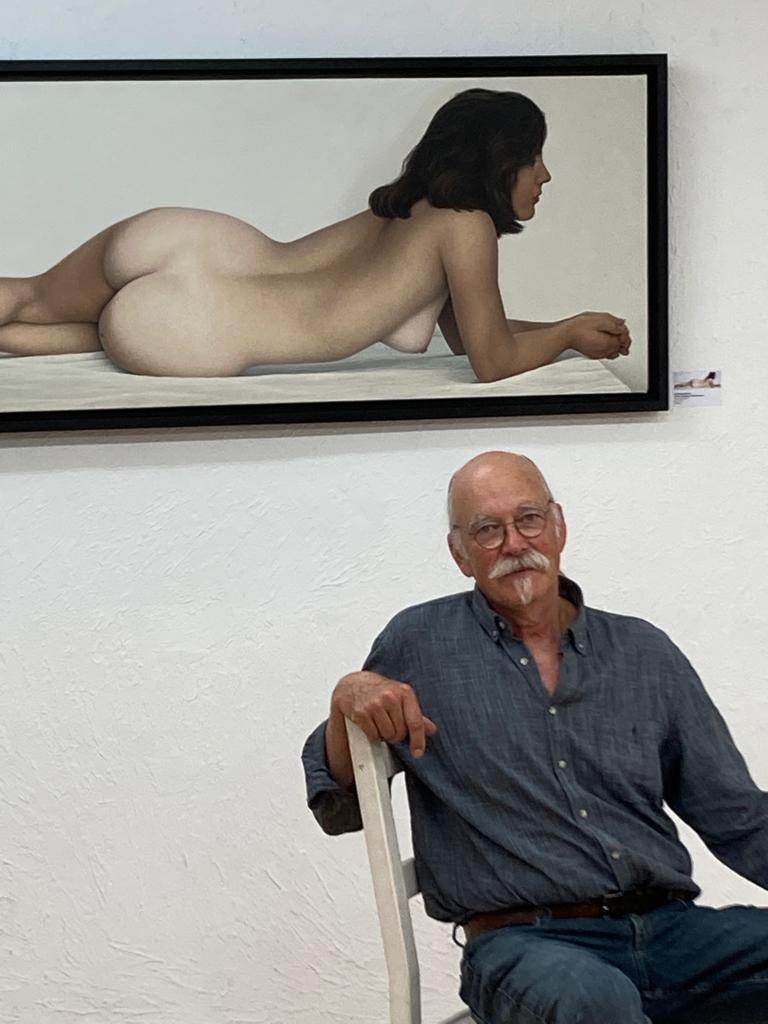
I was so surprised and honored to have been given first prize in the FiKVA prize competition.
As for my career being in competitions has given my work a larger exposure. The painting that was acquired by MEAM has been included in several shows around Spain of works from the museum’s collection. I was solicited by a couple of galleries, one of them, Galeria Léucade, featured my work in their yearly salon, and gave me a one man show this last summer.
But I think the best thing I get from participating in competitions is that I feel appreciated and connected outside of my studio.
Q: If you could use 3 words to describe FiKVA, what might they be?
Only 3??? Can’t do it in 3. I would have to say that I am encouraged that there is another organization that is trying to do what Figurativas has done for the figurative art world.
Maybe in 3:
BRAVO BRAVO BRAVO!
